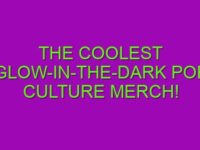-
Table of Contents
The Influence of Indie Rock on Fashion Trends
Indie rock, a genre of music that emerged in the 1980s, has had a profound impact on modern culture. From its unique sound to its DIY ethos, indie rock has influenced various aspects of society, including fashion trends. The influence of indie rock on fashion can be seen in the way people dress, the rise of independent clothing brands, and the incorporation of vintage and thrifted items into mainstream fashion.
One of the most noticeable effects of indie rock on fashion is the way people dress. Indie rock fashion is characterized by its laid-back and non-conformist style. Fans of the genre often opt for a more casual and individualistic approach to dressing, favoring comfort and self-expression over trends and labels. This has led to the popularization of certain clothing items such as band t-shirts, flannel shirts, skinny jeans, and Converse sneakers. These items have become staples in the wardrobes of indie rock enthusiasts and have also made their way into mainstream fashion.
In addition to influencing individual style, indie rock has also given rise to a number of independent clothing brands. These brands often align themselves with the values and aesthetics of the indie rock scene, offering unique and alternative clothing options. By supporting these independent brands, fans of indie rock are able to express their love for the genre through their fashion choices. This has created a sense of community and identity among indie rock enthusiasts, further solidifying the genre’s influence on fashion.
Another way in which indie rock has influenced fashion is through the incorporation of vintage and thrifted items into mainstream style. Indie rock has a strong connection to nostalgia and a love for the past, which is reflected in the fashion choices of its followers. Vintage clothing, with its unique and one-of-a-kind appeal, has become a popular choice among indie rock fans. Thrift stores have also gained popularity as a source for affordable and sustainable fashion, aligning with the DIY ethos of the indie rock scene. This trend has not only influenced the way people dress but has also had a positive impact on the environment by promoting the reuse and recycling of clothing.
The influence of indie rock on fashion trends can be seen in the way people dress, the rise of independent clothing brands, and the incorporation of vintage and thrifted items into mainstream fashion. The laid-back and non-conformist style associated with indie rock has led to the popularization of certain clothing items, such as band t-shirts and skinny jeans. Independent clothing brands that align themselves with the values of the indie rock scene have also emerged, offering unique and alternative fashion options. Additionally, the love for nostalgia and the past has resulted in the incorporation of vintage and thrifted items into mainstream style. Overall, indie rock has had a significant impact on fashion, promoting individuality, sustainability, and a sense of community among its followers.
Indie Rock’s Impact on Music Festivals and Live Events
Indie rock, a genre that emerged in the 1980s, has had a profound impact on modern culture. One area where its influence is particularly evident is in the realm of music festivals and live events. Indie rock has not only shaped the way these events are organized and experienced but has also transformed the overall landscape of the music industry.
One of the most significant effects of indie rock on music festivals and live events is the diversification of lineups. In the past, mainstream festivals primarily featured established, commercially successful acts. However, indie rock’s rise to prominence challenged this status quo by introducing a new wave of independent artists who were not signed to major record labels. These artists brought fresh sounds and perspectives to the stage, attracting a new audience that craved authenticity and originality.
As a result, music festivals began to incorporate a more diverse range of genres and styles into their lineups. Indie rock acts were no longer confined to small, niche events but were given prominent slots alongside more established artists. This shift not only broadened the musical horizons of festival-goers but also provided a platform for emerging artists to gain exposure and connect with a larger audience.
Furthermore, indie rock’s impact on music festivals and live events can be seen in the way these events are organized and curated. Traditionally, festivals were organized by large corporations or promoters who focused on maximizing profits and attracting big-name acts. However, indie rock’s DIY ethos challenged this approach by emphasizing community, inclusivity, and artistic integrity.
In response, a new wave of independent festivals emerged, driven by a passion for music rather than commercial gain. These festivals sought to create immersive experiences that celebrated creativity and fostered a sense of belonging. They often featured unique venues, interactive installations, and a wide range of artistic performances beyond just music. Indie rock’s influence on these events can be seen in their emphasis on fostering a sense of community and providing a platform for emerging artists to showcase their talent.
Moreover, indie rock’s impact on music festivals and live events extends beyond the actual performances. It has also influenced the way these events are consumed and shared. With the rise of social media and streaming platforms, festival experiences are no longer confined to those physically present at the event. Indie rock’s influence can be seen in the way festivals now leverage technology to reach a global audience.
Live streaming of performances, behind-the-scenes content, and interactive social media campaigns have become integral parts of the festival experience. This allows fans from all over the world to engage with the event, discover new artists, and share their experiences with others. Indie rock’s emphasis on authenticity and connection has played a significant role in shaping this digital transformation, making music festivals and live events more accessible and inclusive.
In conclusion, indie rock has had a profound impact on music festivals and live events. Its influence can be seen in the diversification of lineups, the emphasis on community and artistic integrity, and the digital transformation of these events. Indie rock’s DIY ethos and commitment to authenticity have reshaped the way we experience and engage with music festivals, making them more diverse, inclusive, and accessible to a global audience. As the genre continues to evolve, its impact on modern culture is likely to endure, shaping the future of music festivals and live events for years to come.
Indie Rock’s Role in Shaping Alternative Lifestyles and Subcultures
Indie rock, a genre that emerged in the 1980s, has had a profound impact on modern culture. Not only has it influenced the music industry, but it has also played a significant role in shaping alternative lifestyles and subcultures. This article will explore how indie rock has contributed to the development of these unique communities and the ways in which it has influenced their values and beliefs.
One of the key aspects of indie rock is its emphasis on individuality and non-conformity. Unlike mainstream music, which often follows a formulaic approach, indie rock celebrates diversity and encourages artists to express themselves authentically. This ethos has resonated with many individuals who feel marginalized or disillusioned by mainstream culture. As a result, indie rock has become a rallying point for those seeking an alternative way of life.
Indie rock’s rejection of commercialism and its DIY (do-it-yourself) ethos have also played a significant role in shaping alternative lifestyles. Many indie rock bands and artists have chosen to remain independent, eschewing major record labels and opting for self-production and distribution. This independent spirit has inspired countless individuals to pursue their passions outside of traditional structures, whether it be in music, art, or other creative endeavors.
Moreover, indie rock has fostered the development of various subcultures that have their own distinct values and beliefs. These subcultures often revolve around specific genres or scenes within indie rock, such as shoegaze, lo-fi, or post-punk. Within these communities, individuals find a sense of belonging and shared identity, united by their love for a particular style of music. This sense of community extends beyond the music itself, influencing fashion, art, and even political ideologies.
In addition to shaping alternative lifestyles, indie rock has also had a significant impact on the broader cultural landscape. Its influence can be seen in the rise of independent record labels, music festivals, and online platforms that cater to niche audiences. These developments have democratized the music industry, allowing artists to reach a wider audience without compromising their artistic integrity. Furthermore, indie rock’s DIY approach has inspired other creative industries, such as independent filmmaking and publishing, to adopt similar strategies.
The effects of indie rock on modern culture are not limited to the music industry and alternative lifestyles. Its influence can also be seen in mainstream culture, as elements of indie rock have been co-opted and commercialized. For example, fashion brands often draw inspiration from indie rock aesthetics, incorporating elements such as vintage clothing, band t-shirts, and DIY-inspired designs. Similarly, advertising campaigns frequently use indie rock songs to evoke a sense of authenticity and rebellion.
In conclusion, indie rock has played a significant role in shaping alternative lifestyles and subcultures. Its emphasis on individuality, non-conformity, and DIY ethos has inspired countless individuals to pursue their passions outside of mainstream culture. Moreover, indie rock has fostered the development of unique communities and subcultures, united by their love for a particular style of music. Its influence extends beyond the music industry, democratizing various creative industries and even permeating mainstream culture. As indie rock continues to evolve, its impact on modern culture is likely to endure, shaping the values and beliefs of future generations.




















0 Comments